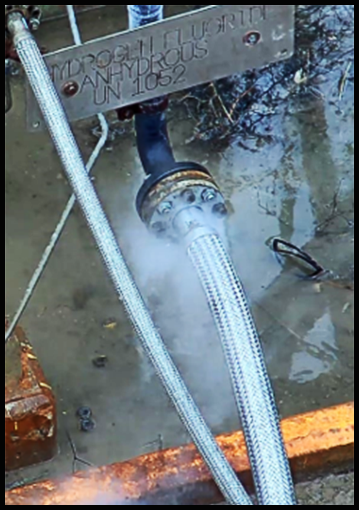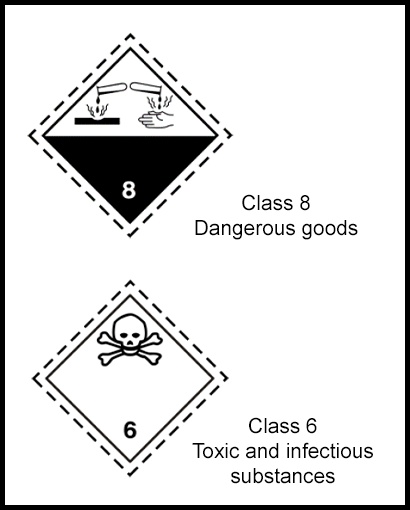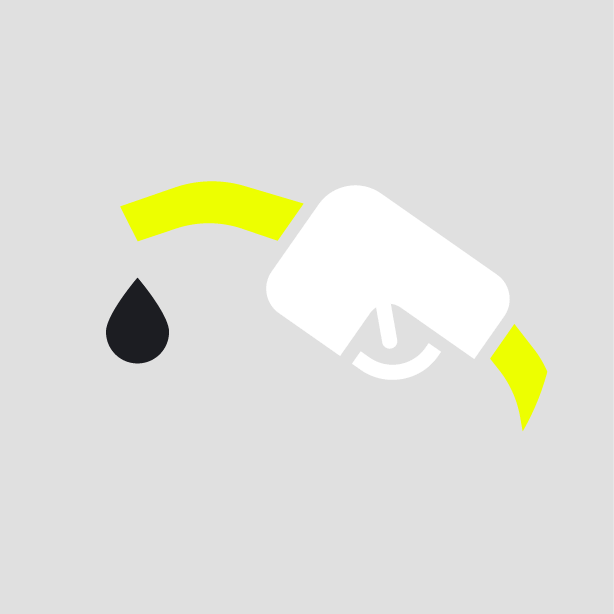-
What happened?
A hydrogen fluoride (HF) transport was being offloaded.
After the transport was isolated from the offloading hoses, an operator noticed a small amount of HF vapor leaking at the end of a hose.
The hoses and system were purged, and the area and hoses were neutralised.
The worker repaired the leak while wearing class C personal protective equipment.
HF exposure could have led to injuries to skin, eyes and respiratory tract.

-
Why did it happen?
The hose had a cracked liner.

-
What did they learn?
Ensure work practices include a step on hose decontamination.
Add a snoop test to procedures for weep hole.
Review hose type with suppliers and compare type used by other HF acid suppliers.
Compare supplier hose inspection programmes to find the best hose management protocol.
Work with suppliers to ensure delivery drivers know how to respond to an HF leak. Verify with drills, audits.

-
Ask yourself or your crew
How can something like this happen here? How can you prevent it?
Do our current procedures cover:
- steps on hose decontamination?
- snoop test for weep hole?
For chemical handling, what PPE do we use?
What do we do in case of leak?
What actions should we take to improve our current (HF unloading or hose management) practices?

Add to homescreen
Content name
Select existing category:
Content name
New collection
Edit collection
What happened?
A hydrogen fluoride (HF) transport was being offloaded.
After the transport was isolated from the offloading hoses, an operator noticed a small amount of HF vapor leaking at the end of a hose.
The hoses and system were purged, and the area and hoses were neutralised.
The worker repaired the leak while wearing class C personal protective equipment.
HF exposure could have led to injuries to skin, eyes and respiratory tract.

Why did it happen?
The hose had a cracked liner.
What did they learn?
Ensure work practices include a step on hose decontamination.
Add a snoop test to procedures for weep hole.
Review hose type with suppliers and compare type used by other HF acid suppliers.
Compare supplier hose inspection programmes to find the best hose management protocol.
Work with suppliers to ensure delivery drivers know how to respond to an HF leak. Verify with drills, audits.

Ask yourself or your crew
How can something like this happen here? How can you prevent it?
Do our current procedures cover:
- steps on hose decontamination?
- snoop test for weep hole?
For chemical handling, what PPE do we use?
What do we do in case of leak?
What actions should we take to improve our current (HF unloading or hose management) practices?
After a Hydrogen Flouride transport was isolated from the offloading hoses, an operator noticed a small amount of HF vapor leaking at the end of a hose. This occurred due to a cracked liner.













